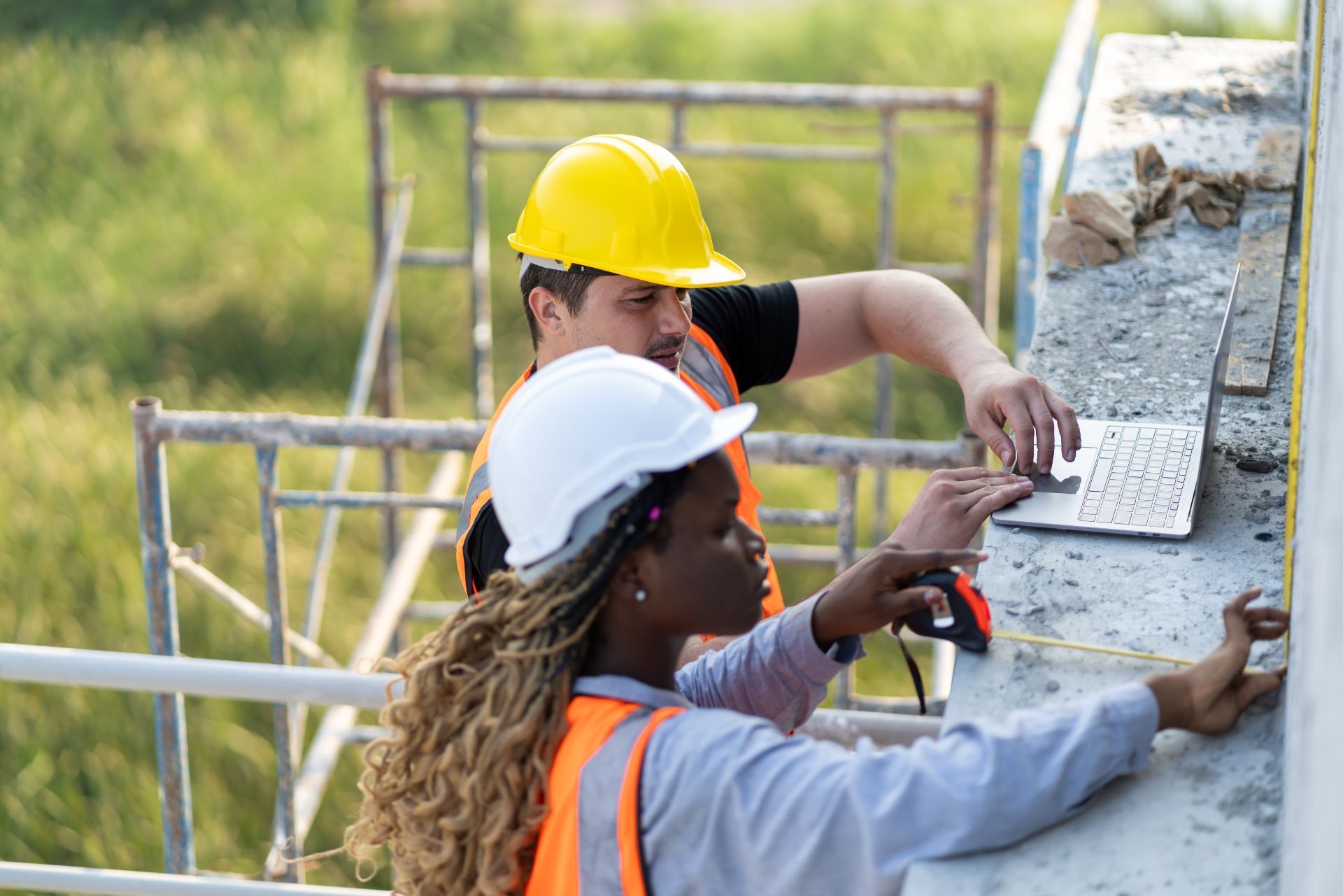Tennessee Builder's Risk Insurance

See How We're Different:
or call us: (619) 734-7477
Top 3 Recommended Policies
Index
Contact Us
Phone
Location
When embarking on a construction project in Tennessee, understanding the various types of insurance available is crucial. One of the most important forms of coverage for builders is Builder's Risk Insurance. This guide will delve into what
Builder's Risk Insurance is, its importance, coverage specifics, and how to obtain it in Tennessee.
What is Builder's Risk Insurance?
Builder's Risk Insurance, also known as Course of Construction Insurance, is a specialized type of property insurance designed to protect buildings under construction. This insurance covers the structure itself, as well as materials, fixtures, and equipment on-site, in transit, or at temporary locations.
The primary purpose of Builder's Risk Insurance is to safeguard against unforeseen events that could lead to financial loss during the construction phase. These events may include theft, vandalism, fire, and certain weather-related damages. It's essential for contractors, homeowners, and developers to understand the nuances of this insurance to ensure adequate protection.
Key Features of Builder's Risk Insurance
Builder's Risk Insurance typically includes several key features that set it apart from standard property insurance. These features often include coverage for materials and supplies, coverage for the structure itself, and protection against various risks associated with construction.
This insurance can also be tailored to meet the specific needs of a project. For instance, coverage limits can be adjusted based on the project's value, and additional endorsements can be added to cover specific risks such as equipment breakdowns or natural disasters. Furthermore, many policies offer coverage for soft costs, which can include expenses like architectural fees, permits, and financing costs that may arise due to delays caused by covered losses.
Another important aspect of Builder's Risk Insurance is its time-sensitive nature. Typically, this insurance is effective only during the construction period, which means that it’s crucial for policyholders to keep track of the project's timeline and ensure that coverage is in place from the start of construction until the project is completed and occupied. Additionally, some policies may provide coverage for certain types of completed work, allowing for a smoother transition to standard property insurance once the construction phase is finished.
Why is Builder's Risk Insurance Important?
Having Builder's Risk Insurance is crucial for several reasons. First and foremost, it provides financial protection against potential losses that can occur during construction. Without this coverage, contractors and property owners may face significant out-of-pocket expenses if something goes wrong. For instance, if a sudden storm damages the partially constructed building, the costs to repair the damage can be substantial, potentially derailing the entire project timeline and budget.
Moreover, many lenders require Builder's Risk Insurance as a condition for financing a construction project. This requirement ensures that the investment is protected and that the project can be completed without financial setbacks. By having this insurance in place, contractors can demonstrate to lenders that they are taking proactive steps to mitigate risks, which can lead to more favorable financing terms and conditions.
Common Risks Covered
Builder's Risk Insurance covers a range of potential risks that can impact a construction project. Some common risks include:
- Theft of materials and equipment
- Vandalism or malicious mischief
- Fire and explosion damage
- Weather-related damage, such as wind or hail
- Damage during transit
Understanding these risks helps project stakeholders assess their insurance needs and choose appropriate coverage options. Additionally, it's important to note that Builder's Risk Insurance can also cover soft costs, such as lost income due to project delays, which can be a significant financial burden. This aspect of coverage can be particularly beneficial for commercial projects, where time is often equated with money. Furthermore, as construction techniques and materials evolve, the types of risks associated with building projects may also change, making it essential for stakeholders to regularly review and update their insurance policies to ensure comprehensive protection.

What Does Builder's Risk Insurance Cover?
Builder's Risk Insurance provides comprehensive coverage for various aspects of a construction project. However, it is essential to know what is typically included and what may be excluded from a standard policy.
Standard Coverage Components
Most Builder's Risk Insurance policies cover the following components:
- The structure being built or renovated
- Building materials and supplies on-site
- Temporary structures, such as scaffolding and fences
- Landscaping and outdoor improvements
These standard components ensure that the core elements of a construction project are protected from various risks. In addition to these, Builder's Risk Insurance may also cover loss or damage caused by theft, vandalism, or even certain natural disasters, depending on the specific terms of the policy. This added layer of protection is crucial, especially in urban areas where construction sites may be more susceptible to theft or vandalism. Furthermore, some policies might extend coverage to include soft costs, such as lost income due to project delays, which can significantly impact the overall budget and timeline of the project.
Exclusions to Consider
While Builder's Risk Insurance offers extensive coverage, there are common exclusions that project owners should be aware of. These may include:
- Damage due to faulty workmanship or design errors
- Wear and tear or gradual deterioration
- Earthquake or flood damage, unless specifically included
Understanding these exclusions is vital for ensuring that additional coverage is obtained if necessary. For instance, if a construction project is located in an area prone to earthquakes or flooding, it may be prudent to seek specialized coverage that addresses these risks. Additionally, some policies may not cover equipment that is not permanently installed on the site, which can lead to unexpected financial burdens if equipment is damaged or stolen. As such, it is advisable for project owners to conduct a thorough review of their insurance policy and consult with their insurance agent to tailor coverage that meets the unique needs of their construction project.
How to Obtain Builder's Risk Insurance in Tennessee
Obtaining Builder's Risk Insurance in Tennessee involves several steps. It is essential for project owners and contractors to follow a systematic approach to ensure they secure the right coverage for their needs.
Assessing Insurance Needs
The first step in obtaining Builder's Risk Insurance is assessing the specific needs of the construction project. This assessment should include evaluating the project's value, the types of materials being used, and the potential risks associated with the location and nature of the construction.
Involving key stakeholders, such as contractors and financial advisors, can provide valuable insights into the necessary coverage limits and potential endorsements. Additionally, it may be beneficial to consult with a licensed insurance agent who specializes in construction-related policies. They can help navigate the complexities of coverage options and ensure that all aspects of the project are adequately protected, including theft, vandalism, and natural disasters that may occur during the construction phase.
Comparing Insurance Providers
Once the insurance needs are assessed, the next step is to compare different insurance providers. It is advisable to seek quotes from multiple insurers to understand the coverage options, premiums, and terms offered.
When comparing providers, consider their reputation, customer service, and claims handling process. Reading reviews and seeking recommendations can also help in making an informed decision. Furthermore, it is important to inquire about any additional services that insurers may offer, such as risk management resources or support in navigating regulatory requirements. Understanding the insurer's financial stability is also crucial, as it ensures that they will be able to fulfill claims when needed. By thoroughly vetting potential providers, project owners can select an insurer that not only meets their coverage needs but also provides peace of mind throughout the construction process.
Cost of Builder's Risk Insurance in Tennessee
The cost of Builder's Risk Insurance can vary significantly based on several factors. Understanding these factors can help project owners budget effectively for their insurance needs.
Factors Influencing Cost
Several factors influence the cost of Builder's Risk Insurance, including:
- The total value of the construction project
- The duration of the construction phase
- The location of the project and its associated risks
- The types of materials and construction methods used
By evaluating these factors, project owners can gain a better understanding of the potential costs associated with securing Builder's Risk Insurance. Additionally, the experience and claims history of the contractor can also play a significant role in determining premiums. Insurance companies often assess the contractor's track record to gauge the likelihood of claims, which can lead to lower rates for those with a solid history of successful project completions.
Moreover, the specific type of construction project can further influence costs. For instance, residential projects may have different risk profiles compared to commercial projects, leading to variations in premiums. Projects located in areas prone to natural disasters, such as floods or tornadoes, may also face higher insurance costs due to the increased risk of damage during the construction phase.
Average Premiums
On average, Builder's Risk Insurance premiums in Tennessee can range from 1% to 4% of the total construction cost. For example, a $1 million construction project may incur insurance premiums between $10,000 and $40,000. However, these figures can vary widely based on the specific circumstances of each project. It's important to note that while a lower premium might seem appealing, it could come at the cost of reduced coverage or higher deductibles, which could be detrimental in the event of a claim.
It is essential to obtain quotes and discuss potential discounts or packages with insurance providers to find the best rates. Some insurers offer bundled policies that combine Builder's Risk Insurance with other types of coverage, such as general liability or workers' compensation, which can lead to overall savings. Additionally, maintaining a good relationship with an insurance agent who understands the nuances of construction insurance can be invaluable in navigating the complexities of policy options and ensuring comprehensive coverage tailored to the specific needs of the project.

Managing Builder's Risk Insurance Claims
In the unfortunate event of a loss or damage during construction, knowing how to manage Builder's Risk Insurance claims is crucial. A well-prepared approach can streamline the process and ensure a satisfactory resolution. Understanding the nuances of your policy and the claims process can make a significant difference in how quickly and effectively you can recover from unexpected setbacks.
Steps to Take After a Loss
In the event of a loss, the following steps should be taken:
- Notify the insurance provider immediately to initiate the claims process.
- Document the damage thoroughly with photographs and written descriptions.
- Gather any relevant contracts, invoices, and receipts related to the construction project.
Taking these steps can help expedite the claims process and ensure that all necessary information is available for review. Additionally, it is wise to keep a detailed log of all communications with your insurance provider, including dates, times, and the names of representatives you speak with. This record can serve as a valuable reference should any disputes arise during the claims process.
Working with Adjusters
Insurance adjusters play a critical role in assessing the damage and determining the payout for claims. It is essential to cooperate with adjusters and provide them with all requested information promptly. They will likely conduct a thorough inspection of the site, so being prepared with all documentation and evidence of loss can facilitate their assessment.
Having a clear understanding of the policy and coverage details can also help in discussions with adjusters, ensuring that the claims process is as smooth as possible. Familiarizing yourself with terms such as "actual cash value" versus "replacement cost" can empower you during negotiations. Furthermore, it may be beneficial to have a construction expert or a claims consultant on your side to help interpret the adjuster's findings and advocate for a fair settlement. Their expertise can be invaluable in ensuring that all aspects of the loss are considered and adequately compensated.
Conclusion
Tennessee Builder's Risk Insurance is an essential component of any construction project. By understanding its importance, coverage details, and how to obtain it, project owners and contractors can ensure that their investments are adequately protected.
As with any insurance, it is crucial to review policies carefully, assess specific needs, and compare providers to find the best coverage options. By taking these steps, stakeholders can navigate the complexities of construction insurance with confidence, allowing them to focus on what truly matters: the successful completion of their projects.
